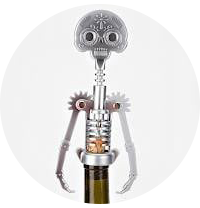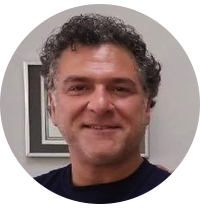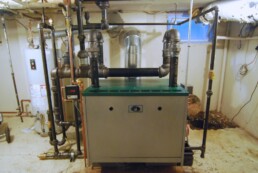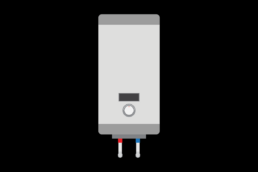Hue P.
These guys are the best don't look anywhere else 100% satisfied and would recommend without hesitation.
Winnie O.
These guys know steam heat. They came highly recommended from a guy named Dan Holohan who writes books on the subject and after the first consultation, you'll understand why.
Ask for John. He's one of the two partners and knows his stuff like no one else I've spoken to before.
Bob H.
Fast, totally reasonable. And no BS on the pricing either. I haven't used them for major work, just some emergency stuff (I've had a corroded pipe or three), and they're nice guys who make quick work out of it with no nonsense. Not only that, I know it shouldn't be such a huge deal, but they totally clean up and there's no sign of the mess that was there just hours before.
Wilbur Z.
They installed my steam boiler a few years back and didn't just install a boiler they performed a work of art. Drop header steam piping is a lost art. Not so with Gateway. They re-piped the boiler and wow, no more banging pipes. My fuel bills have gone down too...Look no further when hiring a plumbing & heating contractor. Call Gateway.
Stacy L.
John and his guys have come to the rescue more times than I can count. Somehow, plumbing problems always crop up at the worst times (right before the weekend, right before vacation, during vacation). I have used them for regular service as well as emergency service and these guys are smart, thoughtful and a real pleasure to work with, even during stressful situations. (And they are very forgiving of situational freakouts, to boot!) I can't recommend them enough!
John Cataneo
At 17, I began heating courses given by what was then the Institute of Boilers and Radiation. My tech skills grew in the field as my role in the business grew more critical to its success and I received my NYC Master Plumber’s License on my first attempt in 1998. Today, with over 30 years of experience in my trade, I am the specifier of all heating products and designs for the company which I now own with my brother. My services extend from single-family residences to mid-rise NYC commercial real estate. GPH is currently under contract in some of the finest and largest renovation projects in NYC and are routinely asked to stay on the jobs to provide service and maintenance.

David J. Cataneo
Dave attended St. John’s University on Staten Island and the General Society of Mechanics and Tradesmen (aka Mechanic’s Institute) in Manhattan. He received his NYC Master Plumber’s License in 1994 and his NJ Master Plumber and NYC Master Fire Suppression Contractor’s Licenses in 1998. He currently lives in Maplewood with his wife and two children.
Heating System Evaluations
As local Steam Heating Experts in New York City, we offer a comprehensive walkthrough of your building to let you know how to resolve those annoying noises and imbalance you've been living with for years. The owner of the company will address your concerns by conducting a thorough room-by-room inspection of your heating system. He will find the source of any excessive noise in the piping or radiators and give detailed instructions on how to fix it. He will determine the proper boiler size for your home or building and compare it to what is currently there.
Full service Heating System Evaluations are done by our heating experts throughout the year. Many systems we evaluate are hot water (hydronic), but overwhelmingly, it is steam heating that we are called to work on.
Very often boilers are replaced throughout the years with grossly-oversized units. These units consistently waste fuel and cost way too much money to run. Replacing a boiler without having all the building's information will likely lead to a poor installation resulting in a 20-30 year commitment to inefficiency and a problematic system.
Upon receipt of your payment, the evaluation will be emailed to you as a Word or PDF Document. You should use the information given to make an informed decision about how best to make repairs or other alterations to your heating system at their estimated costs. It should also help you choose a contractor for the specified tasks and since you've already paid Gateway, there is no pressure to use their services to make the repairs.
The cost of the Evaluation depends on several factors such as the size of the building, number of units, type of system, etc. This service is payable by check, credit card or cash. It takes about an hour in a typical townhouse or several hours in a larger multi-family of commercial buildings and access is sometimes needed to all units and all visible portions of the system.
Tankless Water Heaters - What You Need to Know
There are lots of tankless, or instantaneous, water heaters out there these days. They do a great job and lots of homes in Europe use them. Here in America, though, they present some problems.
The carbon monoxide-filled exhaust is expelled by a fan out its flue pipe which, by most building codes and depending on the unit, must terminate anywhere from one to ten feet away from any building opening such as a door or window. That means drilling a 3″ hole in the side of your home.
The units themselves use a lot of gas all at once. A typical whole-house unit burns around 200,000 BTUs per hour. Compared to your 50-gallon gas-fired, tank-type water heater, which burns around 50,000 BTUs per hour, that’s a lot of fuel. What that means is a tankless water heater requires a much larger gas pipe, and meter, than your tank type may be using. And because it burns so much more fuel, it also needs a lot more fresh air for combustion. This adds to their considerable installation cost as very often a large dedicated gas pipe from the meter to the unit is required and a fresh air duct will have to come from outside.
That’s another 3″ hole in the side of the house.
If your lifestyle is such that you’re frequently using hot water throughout the day, keep in mind that your tankless heater will be on, probably burning 200,000 BTUs per hour for all of that time. The tank-type will chug along slowly burning its 50,000 BTUs a few times per day and store the water for when you need it. Their high efficiency ratings stem from the fact that the unit does not run to simply maintain a constant temperature the way a tank type unit does. They are not inherently “efficient” in the way you may think they are.
To understand this better, you need to know the difference between combustion efficiency (how much of the burning fuel directly translates into available hot water during actual usage) and seasonal efficiency (an estimate comparing fuel usage to hot water usage over an assumed variety of conditions over time). Most of what we hear about a tankless water heater’s high efficiency has to do with its “seasonal” ratings and is best realized when installed for someone who doesn’t turn on their hot water very often for long periods of time. If the heater sits there dormant all day long not turning on until someone comes home from work, does some dishes and takes a shower, that would the perfect application, and real fuel savings might be gained. Looking at practical usage, they claim to give 6 gallons or more per minute of endless hot water but if you look at the literature included with most any common unit, they sort of redefine “hot water”.
Consider these numbers:
90° F rise / 3.2 gpm
77° F rise / 3.7 gpm
65° F rise / 4.5 gpm
55° F rise / 5.2 gpm
45° F rise / 6.4 gpm
Rise is the amount the water temperature will be raised from the inlet of the heater to the outlet of the heater. That means that a 6.4-gallon unit will give you an endless supply of water raised 45 degrees from the temperature being supplied to the unit at a rate of 6.4 gallons per minute. So, during the winter months in our part of the country when the temperature of our incoming water hovers around 40 degrees, you can expect 6.4 gallons per minute of 85-degree water. That’s not hot at all. Your showerhead might only pass 4.5 gallons per minute so, in this unit, we can expect a (check the chart) 65-degree rise. That will give us 110-degree water. That’s much better but there’s nothing left for another fixture to run simultaneously. Of course, in the warmer months this is less of an issue but it’s not something to ignore.
After a newly installed unit goes in I sometimes still get the call: “It’s not working!” But it is working. Just turning on a faucet may not be enough to turn the unit on. They are activated by an internal device called a flow switch that senses water flow through the system (you turned on a faucet) and then turns on the exhaust fan, an ignitor, then the flame, then you start to get hot water. That flow switch needs to sense a minimum amount of moving water, usually 0.6 gallons, to get the process started. A trickle of water to wash your kid’s hands or to wet a facecloth may not be enough to activate the unit and that process may seem like an eternity to some when standing at the sink. You may need to turn the faucet on for stronger flow to get hot water. Is that a waste of water? Probably. At least sometimes. Many professionals in the plumbing, heating and HVAC industry are now finding that a combination of tankless and tank water heaters work best to buffer the erratic behaviors of the tankless alone. When installation costs keep climbing, you can’t look for payback anytime soon. As a professional plumber and owner of Gateway Plumbing and Heating, licensed by the Department of Buildings, and a person dedicated to understanding and embracing new technology in my field, I can say that I like tankless water heaters. What I don’t like is how they’ve been presented to the public, showcased on DIY television shows and sold in large retail home centers with such an abundance of misleading, purely positive information. They are very sophisticated, fuel-burning appliances that require some thought before they are selected, bought, installed or repaired and just like all mechanical equipment, are simply not suitable for every home and every person. You are right to ask questions before diving in. Perhaps a good first step in the right direction is to question using the terms “efficient” and “endless shower” in the same conversation.









